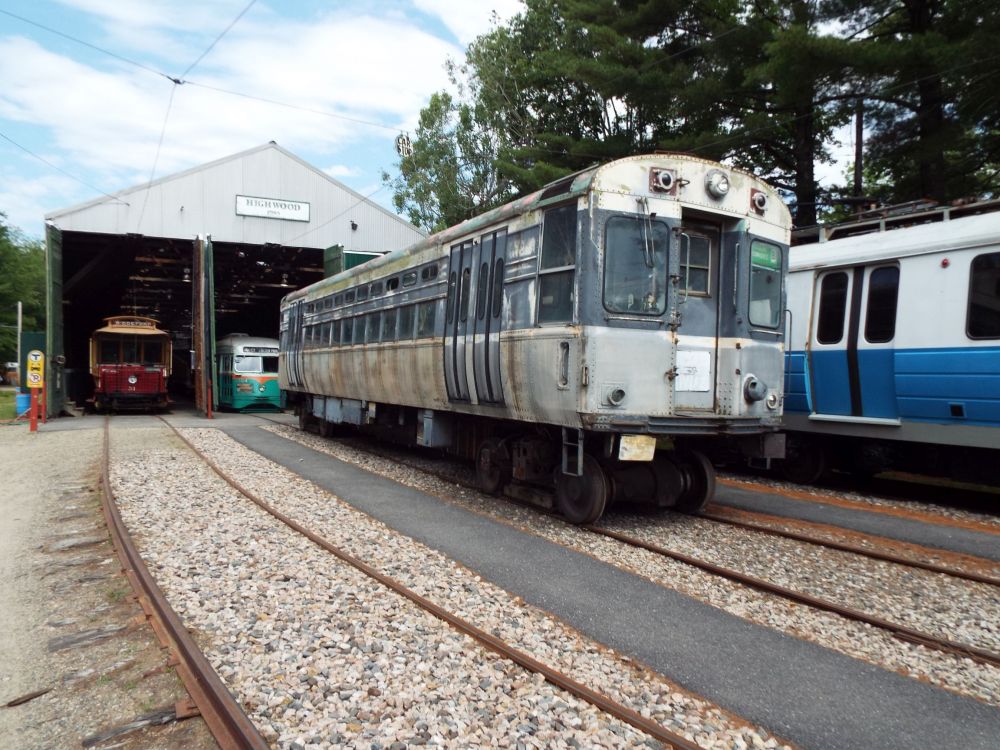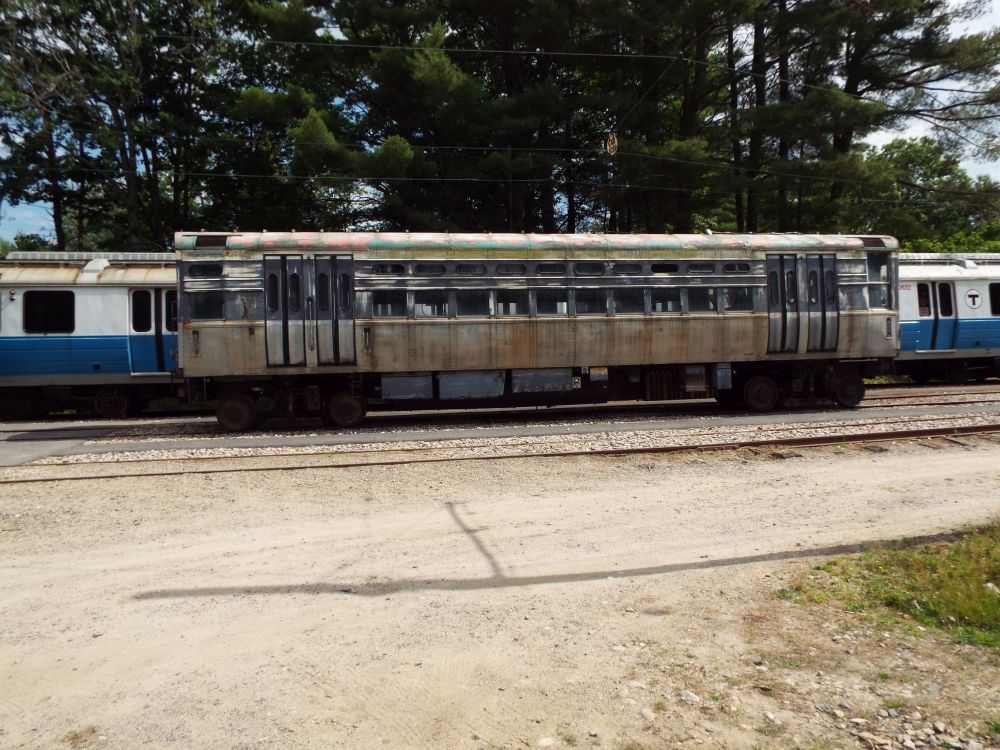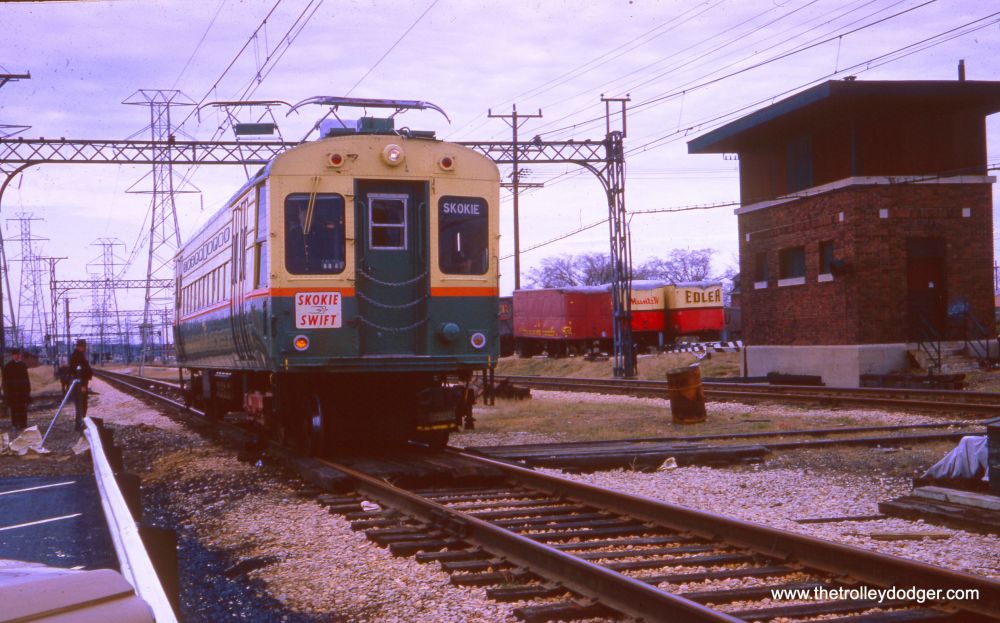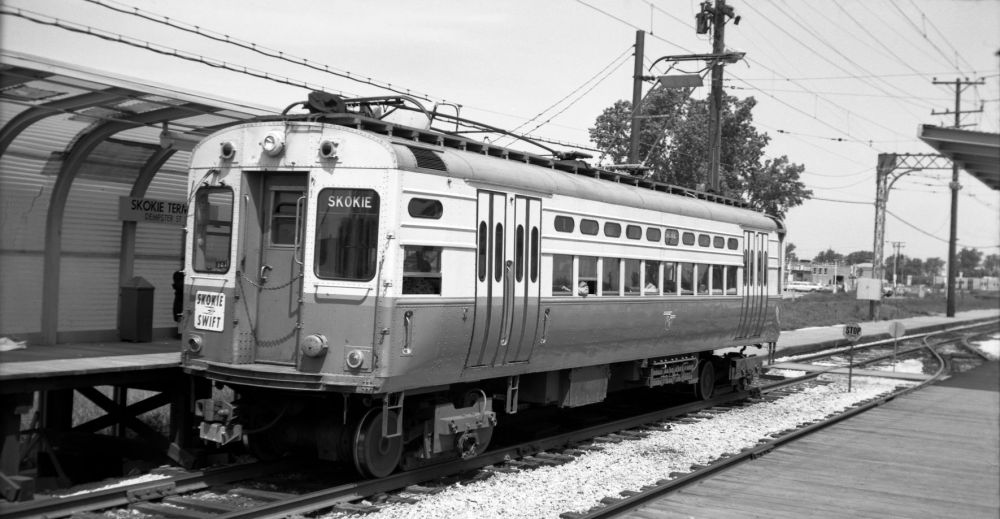
Kenyon F. Karl on 07/22/16
- Builder
- St. Louis Car Co.
- Description
- High Speed Rapid Transit
- Secondary Use
- test car
- Type
- Rapid Transit Cars
- Year
- 1959
- Retired from Service
- 1974
- Acquired by the Museum
- 2016
- Fund
- 614
Chicago Transit Authority 1
From Chicago, IL
History
When the Chicago Transit Authority took over Chicago’s rapid transit system from the Chicago Rapid Transit Co. in 1947, the CTA needed a more modern fleet of all-steel cars. So, between 1950 and 1959, St. Louis Car Co. built a large fleet of 719 cars, Nos. 6001 – 6720. These were built in semi-permanently coupled pairs. To meet a need for a few cars for single unit operation for lighter patronized lines, St. Louis Car built Nos. 1 – 50 in 1959-1960. These were similar to the 6000 series cars except each car was double-ended and designed for one-man operation. St. Louis Car built these cars using parts salvaged from dismantled PCC streetcars. Among the single unit cars, the CTA ordered four (Nos. 1 – 4) with experimental, high-speed motors, controls, trucks and brakes. Nos. 1 – 4 could easily operate at 60 – 65 miles per hour. The CTA painted Nos. 1 – 4 in a distinctive maroon and silver gray scheme. The CTA used the high-speed cars in test service and, after 1960, on the Ravenswood line. By 1964, the CTA repainted the cars in its standard green and cream scheme.
In 1964, Nos. 1 – 4 were the initial cars assigned to the CTA’s new Skokie Swift service. The Skokie Swift (now named the Yellow Line) was a 5-mile non-stop route from Howard Street on Chicago’s northern border to Dempster Street in Skokie. This line used the recently abandoned track of the Chicago North Shore & Milwaukee interurban. Most of the route used overhead wire requiring a transition from third rail to overhead wire at speed. For this, the CTA custom designed “pan trolleys” for Nos. 1 – 4. In the early 1970s, the CTA converted No. 1 to chopper control. The Skokie Swift schedule called for an average start-to-stop speed of 46 mph which the CTA advertised as “the world’s fastest rapid transit.” The Skokie Swift service soon attracted more patronage than expected, and the CTA added more cars to the service. Funds from the federal Mass Transit Demonstration Program helped finance starting the Skokie Swift. The success of the Skokie Swift helped pave the way for future federal funding of mass transit.
In 1974, General Electric acquired No. 1 to use at its Erie, PA plant for testing new equipment. Before sending No. 1 to GE, the CTA repainted the car in a silver and charcoal scheme. The CTA scrapped Nos. 2 -4 in 1974-75. In the mid-1980s, GE put No. 1 into storage.
After having been derelict at Erie for many years, General Electric donated No. 1 to Seashore in 2016.
Trucks
- Number: 2
Weight and Dimensions
- Length: 48’ 0.00"
- Width: 9’ 4.00"
- Height: 11’ 10.00"
- Weight: 45000 lbs.
Additional Images

Kenyon F. Karl on 07/22/16

Car 1, 2, 3, or 4 on Yellow Line on 04/20/64 – Richard P. Hofer at thetrolleydodger.com

Car 1 at Dempster Street (Yelow Line) on 6/11/65 at thetrolleydodger.com
© 1998 - 2025 New England Electric Railway Historical Society. All Rights Reserved.